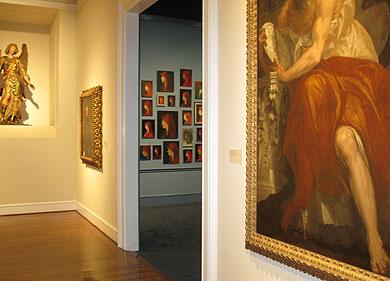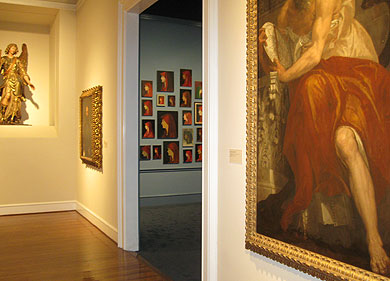Though my job at LACMA is to promote the museum's programming, there's one exhibition I almost hope our visitors don't know about. I think the serendipitous discovery of Francis Alÿs: Fabiola is about as rewarding an experience as a patron could have here. Not only is this gem of an exhibition thoroughly interesting in and of itself, but it also touches on context in a very powerful way, which is why stumbling upon it is such a treat.
A little background on the show—contemporary artist Alÿs has assembled a collection of nearly identical paintings and other depictions of fourth-century Saint Fabiola, all based on a renowned lost portrait by nineteenth-century painter Jean-Jacques Henner. I was hooked there. Then I saw the installation. I'm no art critic, but the perfectly proportioned blue room in the European galleries is an ideal fit for these objects. And it's not accidental: Alÿs very clearly specified the space in which they were to be shown, which is pretty atypical. Artists don't usually choose the galleries their work is shown in; curators do. As you'll see in the picture in this post, Alÿs selected the European galleries, which are filled with venerated works.
So now, imagine this... walking through the European galleries, passing huge oil paintings by Paolo Veronese, a formidable marble sculpture from the sixteenth century, and then, suddenly, happening upon this group of works—one of the staff favorites is made from colored beans—and experiencing the juxtaposition of European masterworks and objects collected from flea markets, antique shops, and elsewhere. The juxtaposition of high to low, which has been elevated to high, is pure magic to me.




